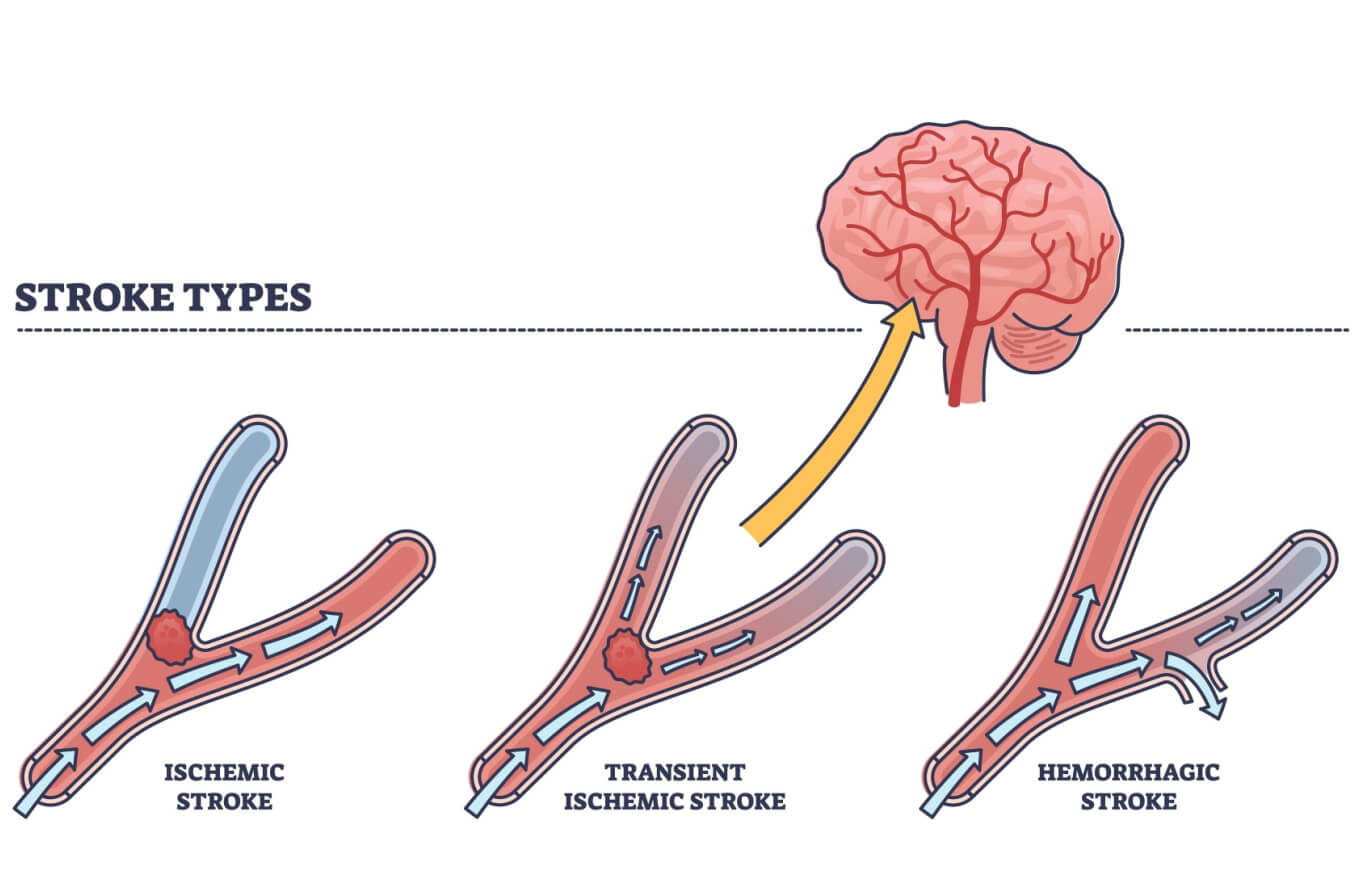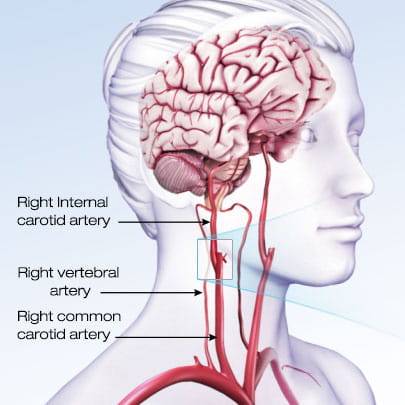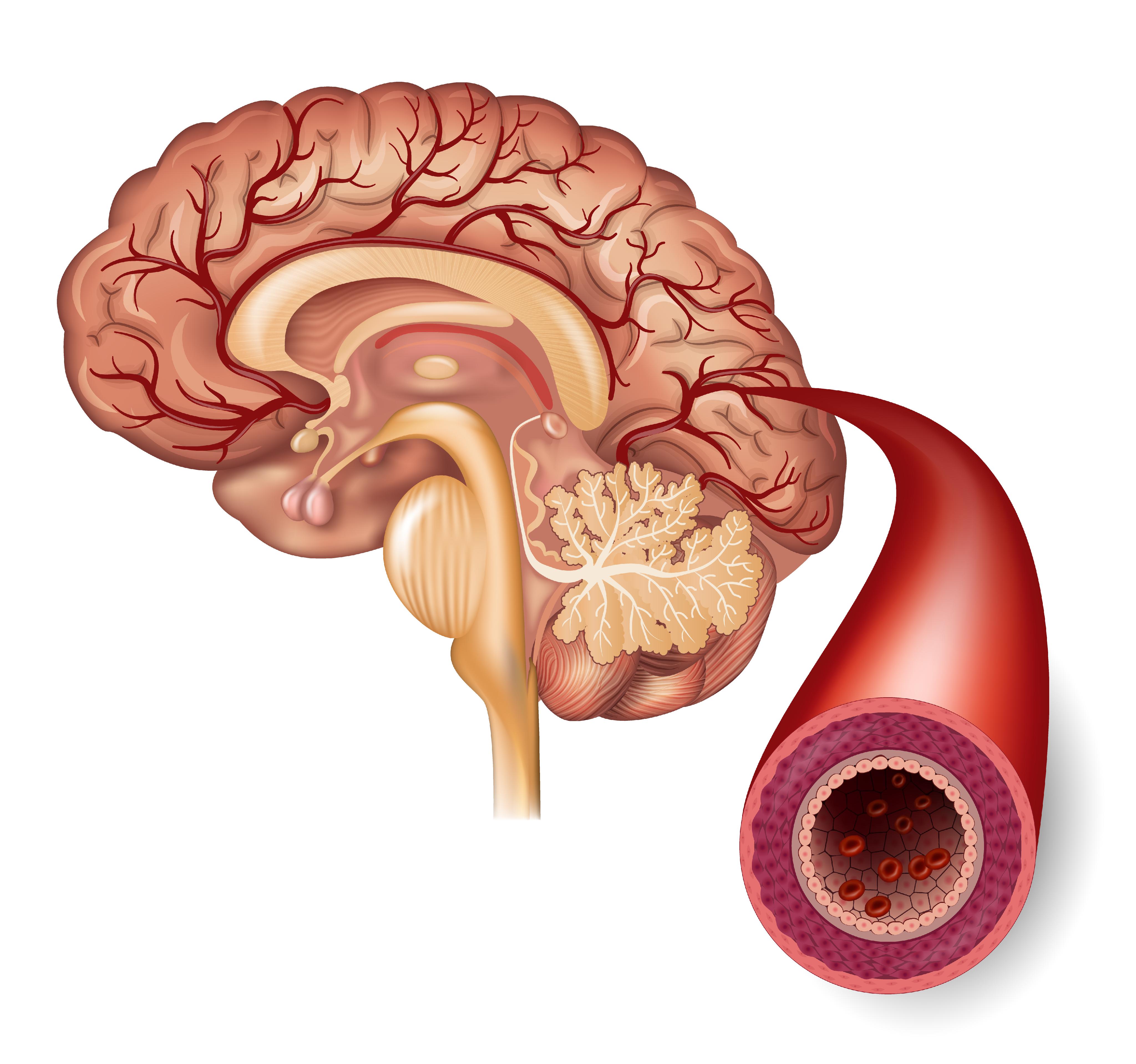You might have heard the name Tia Carrere and thought of a certain celebrated individual, someone with a memorable presence. Well, today, we are going to explore a different kind of "Tia Carrere background," one that is perhaps even more important for your well-being. It's about an acronym, TIA, which stands for something quite serious in the world of health. So, we are going to talk about what this TIA really means and why paying attention to its "background" is truly important for anyone.
This TIA, the one we are discussing, refers to a transient ischemic attack. It's a brief spell of unusual feelings or physical changes that look a lot like what happens during a stroke. This event, you see, comes about because there is a very short interruption in the flow of blood to the brain. It's a temporary halt in the blood's path, and while it doesn't cause lasting damage on its own, it really is a sign that something needs a closer look.
Getting these signs checked out quickly is, you know, absolutely essential to figure out what caused this temporary interruption. It also helps those who care for your health figure out the best way to help you going forward. This isn't something to just brush aside, as a matter of fact; it's a very clear message from your body that deserves immediate attention.
Table of Contents
- What is a TIA, anyway?
- Why Does a TIA Happen?
- How Long Do These Episodes Last?
- Finding Expert Help for Your "Tia Carrere Background" Concerns
- Are TIAs Connected to Other Health Issues?
- Spotting the Signs - What to Look For
- The Serious Side of Ignoring a TIA
- Pain in Your Limbs - Another "Tia Carrere Background" Clue?
What is a TIA, anyway?
So, what exactly is this TIA we're talking about? Well, it's a very short period of changes in your body, feelings that mimic what someone might experience during a full-blown stroke. Think of it like a brief warning signal, a little flicker that says, "Hey, something here needs attention." It's not a stroke itself, which is a really important distinction, but it shares many of the same features that can be quite alarming to witness or feel. This temporary event, you know, doesn't cause lasting harm to the brain tissue, unlike a true stroke. It's more of a momentary pause in normal function, a fleeting disturbance that passes relatively quickly. Basically, it's a kind of temporary brain event that gives you a heads-up.
Understanding the "Tia Carrere Background" of a Mini-Stroke
When we talk about the "Tia Carrere background" in this context, we're really looking at the underlying story of what's happening in your body when you experience one of these mini-strokes. It's about understanding the mechanisms behind this brief health scare. The main thing to grasp is that a TIA comes about because there's a quick, short-lived interruption in the path of blood flowing to your brain. This temporary block means that part of your brain isn't getting the nourishment and oxygen it needs for a little while. That, is that, temporary lack of supply causes the symptoms you might feel. It's like a momentary pause in the delivery system, which, in turn, causes those fleeting signs. Learning about this "background" helps us appreciate why recognizing the symptoms is so important, as it points to an issue with blood supply that needs sorting out.
Why Does a TIA Happen?
Now, let's get into why these temporary interruptions occur. The root cause is always a brief stop in the blood's journey to a specific part of your brain. This can happen for a few reasons, but the core idea is that something momentarily obstructs the pathway. It might be a tiny clot that forms and then breaks apart, or a narrowed blood path that temporarily restricts flow. The body usually has ways of clearing these things up quickly, which is why the symptoms are so short-lived. However, that quick resolution doesn't mean it's harmless. It’s actually a sign that there might be something else going on with your blood pathways that needs some investigation. You know, it’s like a car engine sputtering for a second; it might restart, but you still want to know why it sputtered in the first place.
How a Brief Blockage Connects to Your "Tia Carrere Background"
Thinking about your "Tia Carrere background" here means looking at the specific details of how this temporary blockage plays out. This blockage isn't just limited to the brain, by the way. Sometimes, this brief stop in blood flow can affect other important areas, too. It could be a part of your spinal cord, which helps carry messages between your brain and body. Or, it might even impact the very thin layer of light-sensitive tissue at the back of your eye, which we call the retina. When blood flow is briefly cut off to these places, it can cause very short-lived problems like sudden vision changes or difficulties with movement. So, the "background" of a TIA really means understanding that it's a temporary halt in blood supply that can happen in a few key places, not just the brain itself. This temporary halt, you see, is what causes the symptoms that come and go so quickly.
How Long Do These Episodes Last?
One of the distinguishing features of a TIA is its duration. These episodes usually last only a few moments, sometimes just a couple of minutes. They are, you know, very brief. Unlike a full stroke, which can cause lasting problems, a TIA's effects are gone relatively quickly. This short duration can sometimes lead people to dismiss the event, thinking it was just a strange occurrence that passed. However, that fleeting nature is precisely what makes it a "transient" attack. Even though the symptoms disappear, the underlying reason for them hasn't necessarily gone away. It's like a quick power outage; the lights come back on, but you still want to know what caused the flicker in the first place, right?
What Should You Do About a "Tia Carrere Background" Event?
When you experience something that feels like a "Tia Carrere background" event, meaning a TIA, getting it looked at right away is incredibly important. A quick check-up of your symptoms is truly essential to figure out what caused this temporary health scare. This prompt action also helps your healthcare providers figure out the best way to care for you. They need to understand the root of the problem to give you the right advice and treatment. It's not something to put off, as a matter of fact, because even though the symptoms might vanish, the underlying risk could still be present. Thinking about your "background" in this sense means understanding that this brief event is a signal that needs a professional to interpret it and guide your next steps. You know, it's like a smoke detector going off; even if the smoke clears, you still check for the fire.
Finding Expert Help for Your "Tia Carrere Background" Concerns
When it comes to getting help for these kinds of temporary health signals, finding a team with deep knowledge is a really good idea. You want people who truly understand the intricacies of blood flow and brain health. These are specialists who have spent years learning about conditions that affect your blood pathways and your brain. They work together, bringing different perspectives to the table, to make sure you get a thorough look. It's about having a group of skilled individuals who can piece together the puzzle of what happened and why, giving you a complete picture of your situation. This kind of team approach, you know, can make a real difference in how things play out for you.
The Mayo Clinic's Approach to "Tia Carrere Background" Care
Looking at the "Tia Carrere background" of care, places like Mayo Clinic have put together a very experienced setup for handling transient ischemic attacks. They have a large group of professionals, some of the most knowledgeable in the country, who focus specifically on these kinds of conditions. These are doctors who have a lot of training in issues related to blood vessels and brain function, often called cerebrovascular neurologists. They also have other specialists who understand how blood works in the body. This means they have a comprehensive team ready to look at your specific situation. Their approach, you see, is built on years of practice and a lot of collective knowledge, spread across different locations. So, when we talk about the "background" of care, it means getting help from a place that truly specializes in these complex health matters, offering a very complete and thoughtful evaluation.
Are TIAs Connected to Other Health Issues?
It's worth asking if these temporary health events are linked to other conditions, and the answer is yes, sometimes they are. For instance, there's a type of memory problem called vascular dementia, which comes about from conditions that cause harm to the blood pathways in your brain. When these blood pathways get damaged, they can't deliver the right amounts of nourishment and oxygen that your brain needs to work properly. This lack of proper supply can lead to issues with thinking and remembering. So, a TIA, which is about a temporary block in blood flow, can sometimes be a sign that there might be broader issues with your blood vessels that could, you know, contribute to things like vascular dementia down the line. It's all connected, really, within the body's intricate systems.
The Link Between "Tia Carrere Background" and Vascular Health
When we consider the "Tia Carrere background" in terms of your body's overall health, especially your blood vessels, it becomes clear that these brief episodes are often a signal. They point to underlying issues with your vascular system, which is the network of all your blood pathways. Problems that cause a TIA, like narrowed arteries or tiny clots, are often the same kinds of problems that can lead to other serious health concerns. Your blood vessels need to be in good shape to deliver what your brain and other parts of your body require. If they're not, you might see these temporary warnings. So, the "background" here is really about the health of your blood pathways and how they are functioning. Keeping them healthy is, you know, a very big part of preventing more serious issues from cropping up later on.
Spotting the Signs - What to Look For
Knowing what to look for is a really big piece of the puzzle when it comes to these temporary health events. The symptoms of a TIA are, as we've mentioned, very similar to those of a stroke. This might include sudden weakness or numbness on one side of your body, perhaps in your face, arm, or leg. You might also have trouble speaking clearly or understanding what others are saying. Vision changes, like suddenly losing sight in one eye or having blurry vision, can also happen. Some people experience sudden, severe headaches without a known cause. These signs, you know, appear very suddenly and can be quite unsettling. Being able to spot them quickly is absolutely essential for getting help fast, which can make a real difference in the outcome. It's about recognizing that something is off and acting on it.
Recognizing the "Tia Carrere Background" of Potential Trouble
The "Tia Carrere background" here is all about learning to recognize these signs of potential trouble. Because these symptoms come on so quickly and then often go away, it's easy to dismiss them as nothing serious. However, those fleeting moments are your body's way of sending a very clear message. If you notice any sudden changes in your speech, vision, or movement, even if they only last for a minute, you should take them seriously. It could be a sudden droop in one side of your face, or perhaps an arm that feels unexpectedly weak. These are all clues that point to a possible TIA. Knowing this "background" means being prepared to act, not to wait. It's about understanding that even a brief episode can be a very important indicator of something that needs immediate attention from a medical professional. So, you know, pay attention to those fleeting signals.
The Serious Side of Ignoring a TIA
It's truly important to understand that while a TIA itself might not cause lasting harm, ignoring it can have very serious consequences. These temporary episodes are, in essence, a warning. They are your body's way of telling you that you are at a higher chance of having a full-blown stroke in the near future. An untreated TIA can, you see, lead to a stroke, which can cause permanent damage to your brain and significant, lasting physical or mental changes. This is why getting a quick check-up is not just a good idea, but a really necessary step. It’s about taking that warning seriously and doing what you can to prevent a much more damaging event from happening. So, you know, don't just hope it goes away and stays away.
Why Your "Tia Carrere Background" Warning Matters
Understanding why your "Tia Carrere background" warning matters so much boils down to prevention. If you experience the symptoms of a TIA and don't get them checked, you're essentially leaving yourself open to a much greater risk. The warning is there for a reason. It's a chance to step in and make changes or get treatment that could stop a stroke from happening. Spotting these symptoms quickly means you can get help faster, which, in turn, leads to quicker care and potentially much less harm to your brain. It's about being proactive with your health. Your "background" here is a story that could have a much better ending if you pay attention to the early signals and act on them. So, you know, listen to what your body is trying to tell you.
Pain in Your Limbs - Another "Tia Carrere Background" Clue?
While TIAs are mainly about temporary brain issues, there are other related conditions that involve blood flow, and sometimes these can show up as pain in your arms and legs. For instance, you might experience discomfort in your legs when you walk, a feeling that often goes away when you rest. This particular kind of leg pain is called claudication. It happens when the arteries in your arms and legs are narrowed, meaning they can't deliver enough blood to your muscles during activity. This is another example of how issues with blood pathways can show up in different parts of your body. It's a separate condition from a TIA, but it points to similar underlying concerns about vascular health. So, you know, it's all part of the
Related Resources:



Detail Author:
- Name : Lydia Reinger MD
- Username : awitting
- Email : reilly.wava@lynch.biz
- Birthdate : 1989-01-17
- Address : 1639 Juwan Forges Suite 658 South Payton, TX 94446-0703
- Phone : 831.375.2744
- Company : Blick-Wisozk
- Job : Web Developer
- Bio : A necessitatibus et velit. Possimus placeat dicta occaecati quisquam eligendi quia soluta. Ipsum quia sunt mollitia voluptatem dolores dolorem voluptas. Provident quo corrupti et ducimus autem sit.
Socials
twitter:
- url : https://twitter.com/neil.rodriguez
- username : neil.rodriguez
- bio : Eos nesciunt ducimus sunt dicta magni sint. Laboriosam quis veritatis ex iure aut expedita accusantium voluptatem. Quia eos quo illo deserunt ut.
- followers : 2458
- following : 2690
linkedin:
- url : https://linkedin.com/in/neilrodriguez
- username : neilrodriguez
- bio : Rem tenetur suscipit rerum nesciunt.
- followers : 4315
- following : 1202
facebook:
- url : https://facebook.com/neil.rodriguez
- username : neil.rodriguez
- bio : Aut dolor quo blanditiis ducimus aut saepe.
- followers : 6043
- following : 36
tiktok:
- url : https://tiktok.com/@neilrodriguez
- username : neilrodriguez
- bio : Deleniti consequatur qui id voluptatem.
- followers : 6729
- following : 2635
instagram:
- url : https://instagram.com/rodriguezn
- username : rodriguezn
- bio : Saepe aut iusto quisquam quis et porro rem. In et quas rerum velit. Quod officiis debitis eum qui.
- followers : 1082
- following : 1149